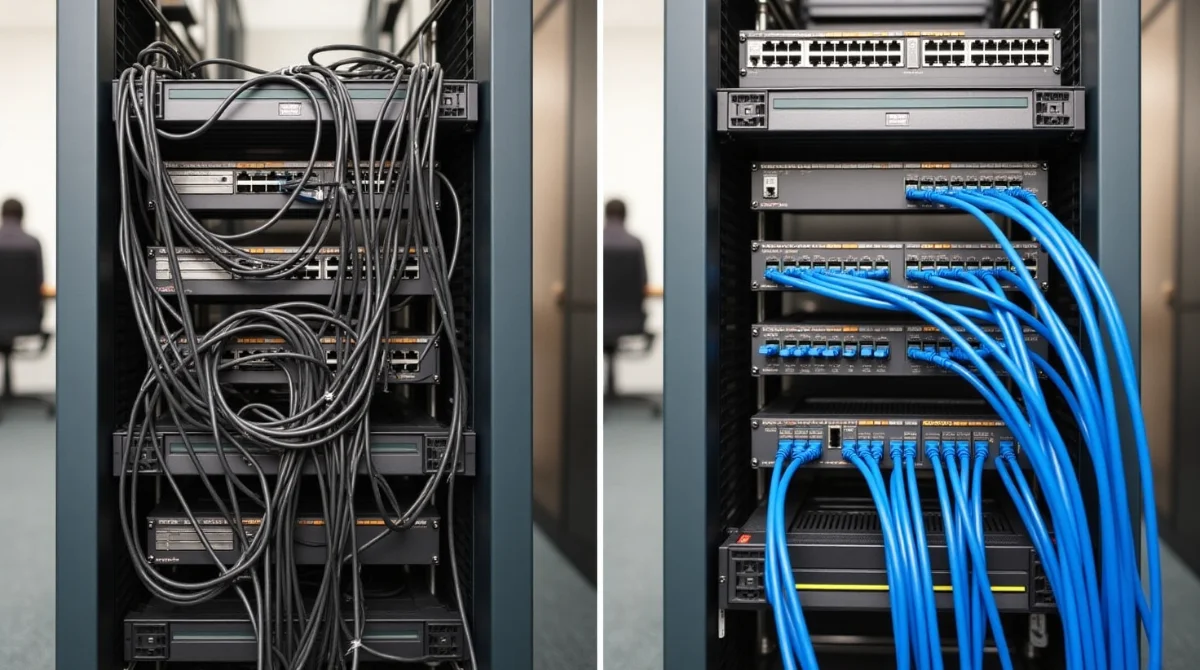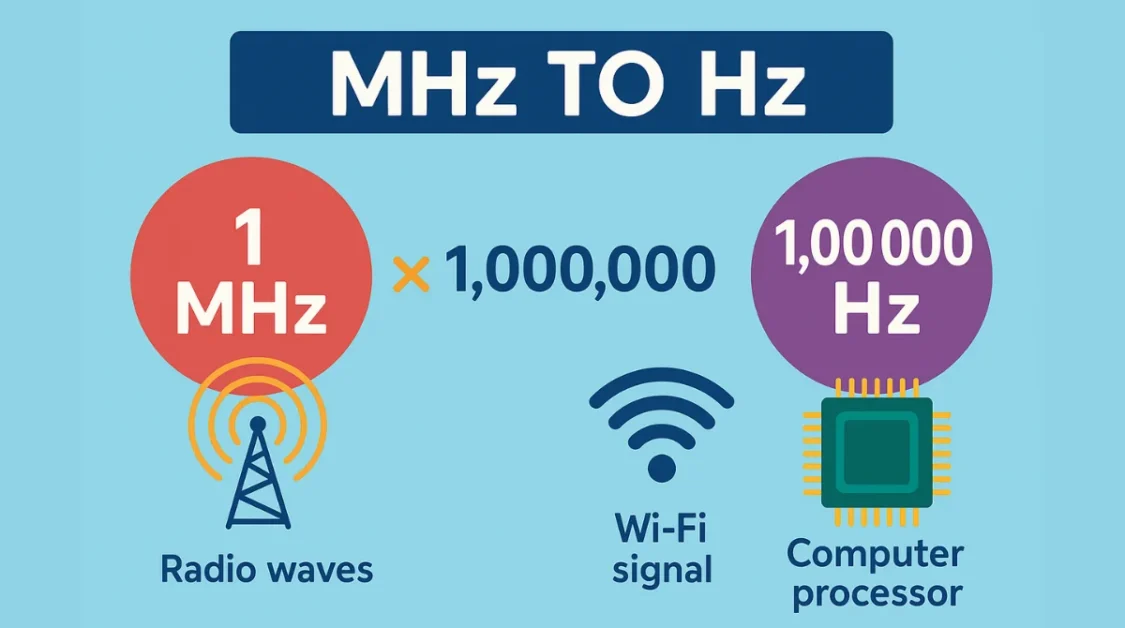In today’s fast-paced digital world, businesses rely heavily on efficient and reliable communication systems. Structured cabling is the backbone of these systems, providing a standardized approach to organizing and managing a company’s network infrastructure. This guide will walk you through the essentials of structured cabling, its components, benefits, and why it’s a smart investment for any organization.
What Is Structured Cabling?
Structured cabling is a comprehensive system of cables and associated hardware that provides a standardized and organized approach to a company’s telecommunications infrastructure. Unlike traditional point-to-point cabling, where each device is connected directly to another, structured cabling uses a centralized system that supports multiple hardware uses and is suitable for today’s high-demand environments.
This system includes a series of patch panels and trunks that allow for changes and additions without disrupting the entire network. It’s designed to support various hardware systems and applications, such as data, voice, video, and security systems.
Key Components of Structured Cabling
Understanding the components of structured cabling is essential to grasp how the system functions:
1. Entrance Facilities
This is the place where the internet or phone line from the outside world enters your building. Think of it like the main gate for your network. Here, the wires and devices connect the building to your internet provider. It also includes protection systems to keep your equipment safe from electrical issues or weather-related damage.
2. Equipment Room
Imagine this as the control room or brain of your building’s network. All the important networking machines, like servers, switches, and routers, are kept here. From this room, signals and data are sent out to the rest of the building. It helps manage everything from a single place.
3. Backbone Cabling
This is like the main highway of your network. It connects the equipment room with other parts of the building like telecommunications rooms. These cables usually run between floors or across long distances inside a building. They carry large amounts of data, so they need to be fast and strong.
4. Telecommunications Room
This is a smaller room on each floor or area of the building. It holds the equipment that connects the main backbone cables to the wires that go out to individual rooms or desks. It acts like a local post office where data is sorted and sent out to the right locations.
5. Horizontal Cabling
This is the network of wires that goes from the telecommunications room to each person’s workspace or office. These cables are usually hidden in ceilings or floors and connect directly to the wall outlets where you plug in your computer or phone.
6. Work Area Components
This is everything that connects your device (like a computer or printer) to the wall. It includes things like patch cables, wall outlets, and connectors. These parts make it possible for your device to communicate with the rest of the network.
Structured Cabling vs. Conventional Point-to-Point Cabling

When setting up a network, there are two main ways to connect your devices: Structured Cabling and Conventional Point-to-Point Cabling. Understanding the difference between them can help you choose the best option for your business.
What is Point-to-Point Cabling?
In a point-to-point cabling system, each device is connected directly to another device with a single cable. For example, your computer might be directly connected to the server with one long wire. This setup works for very small or simple networks, like in a home office with just a few devices.
But in bigger environments like businesses, this method quickly becomes messy and hard to manage. Every time you add a new device, you need another cable, and these wires start to pile up, creating a tangled and confusing system.
What is Structured Cabling?
Structured cabling, on the other hand, is a more organized and professional way to set up a network. Instead of connecting each device directly to another, all devices connect to a central point usually through patch panels and network switches. This system follows clear standards, uses high-quality cables, and separates different parts of the network into clean sections.
Now, let’s compare both systems side by side:
| Feature | Structured Cabling | Point-to-Point Cabling |
| Organization | Very neat and clean; easy to manage | Messy and disorganized as more devices are added |
| Scalability | Easy to expand; supports growth | Difficult to scale; becomes confusing |
| Performance | Consistent, high-speed data transfer | Signal quality can drop due to tangled or long cables |
| Troubleshooting | Easy to find and fix problems | Hard to track down issues in a web of cables |
| Initial Cost | Higher setup cost | Lower initial cost for small networks |
| Long-Term Cost | Cost-effective due to low maintenance | Can be costly over time with frequent fixes |
| Aesthetics | Looks professional and safe | Looks messy and unprofessional |
| Future Readiness | Supports modern tech and upgrades | May not support new systems easily |
Why Structured Cabling Is the Better Choice for Businesses?
Even though structured cabling might cost more at the beginning, it offers many more advantages in the long run. It keeps your network clean, supports new technology, reduces maintenance time, and makes adding or removing devices simple. Businesses that rely on stable and fast connections, like call centers, offices, or data centers, strongly benefit from structured systems.
Point-to-point cabling might work in very small setups, but once you have more than a few devices or plan to grow, it becomes a headache. It’s like using extension cords all over your house eventually, it becomes a fire hazard and a mess.
Benefits of Structured Cabling
Implementing a structured cabling system offers numerous advantages:
1. Simplified Management
Structured cabling is neat, organized, and follows a standard setup. That means if something goes wrong with your internet or phone connection, it’s easier to find the problem and fix it quickly. You don’t have to deal with messy wires or guess which cable connects to what. This helps save time and avoids long periods when the network isn’t working.
2. Scalability and Flexibility
Businesses grow over time, and so do their technology needs. With structured cabling, you can easily add new computers, phones, or even entire departments without tearing everything apart. The system is built to grow and change with your business. It’s like having extra room in your closet you don’t need to rebuild it every time you buy something new.
3. Improved Performance
When cables are properly arranged and separated, there’s less chance of signal problems or slow internet. This means your data can travel faster and more reliably across the network. Clean cabling also helps reduce errors and improves the overall quality of phone calls, video meetings, and file transfers.
4. Cost-Effectiveness
Yes, setting up a structured cabling system can cost more at the beginning. But in the long run, it saves you money. Why? Because it lowers repair and maintenance costs, reduces downtime, and makes future upgrades much easier. So, instead of paying for repeated quick fixes, you make a one-time investment that keeps paying off.
5. Enhanced Aesthetics and Safety
Messy wires on the floor or hanging from walls don’t just look bad they can also cause accidents or block air flow around your equipment, which can lead to overheating. Structured cabling keeps everything tidy and safe. It creates a cleaner workspace and reduces the chance of someone tripping over cables or equipment getting damaged.
6. Future-Proof Infrastructure
Technology is always changing. New systems, faster internet, smarter devices, they all need strong networks to work properly. Structured cabling is designed to handle high speeds and large amounts of data, so it’s ready for the future. You won’t need to replace the whole system just to keep up with new tech.
Structured Cabling Standards
Adhering to industry standards ensures the reliability and performance of structured cabling systems. The ISO/IEC 11801 standard specifies general-purpose telecommunication cabling systems suitable for various applications, including analog and ISDN telephony, data communication, building control systems, and factory automation. This standard covers both balanced copper cabling and optical fiber cabling, ensuring compatibility and performance across different systems.
Implementing Structured Cabling in Your Business
When you’re thinking about installing structured cabling in your business, it’s not just about plugging in some wires. You need to plan properly so the system works well now and can grow with your company in the future. Here are the key things to think about:
1. Network Size and Complexity
Start by looking at how big your network is. Ask yourself: How many computers, phones, printers, security cameras, or other devices need to be connected? Is your business running simple tools like email and web browsing, or are you also using heavy applications like cloud software, video conferencing, or large databases? Knowing this helps decide what kind of cabling setup is best for you.
2. Growth Projections
Your business today might be small, but what about in a year or five years? You might add more employees, move to a bigger space, or open new branches. A good structured cabling system is built with the future in mind. You want a system that lets you easily add more devices or services without starting from scratch.
3. Budget Constraints
Of course, money always matters. Installing structured cabling might feel like a big expense at first, but think of it as a smart investment. It reduces future repair costs, prevents downtime, and supports new technology without constant upgrades. So, balance your budget carefully spend wisely now to save later.
4. Compliance Requirements
There are official rules and standards that need to be followed when setting up networks, especially if you’re in sectors like finance, healthcare, or government. These rules are there to make sure your network is safe, secure, and efficient. Make sure your cabling system meets these standards so you don’t run into legal or technical problems later.
Conclusion
Structured cabling is essential for building a strong, reliable, and future-ready network. Its organized layout not only improves network performance but also makes managing and troubleshooting much easier. As businesses grow and adopt new technologies, structured cabling provides the flexibility and scalability needed to support that growth without major disruptions. While the initial cost may be higher than traditional methods, the long-term savings, safety, and simplicity make it a smart investment. Understanding its key components, benefits, and how to implement it helps businesses make better decisions for their IT infrastructure. In today’s fast-moving digital world, structured cabling lays the foundation for smooth operations, efficient communication, and the ability to adapt quickly to future network needs.
Related Topic: Fiber Optic Cable : Uses, Types & Benefits



